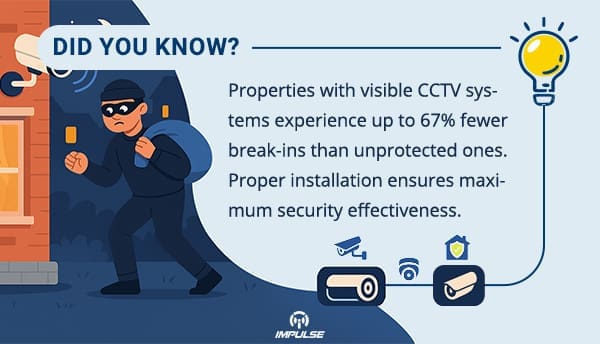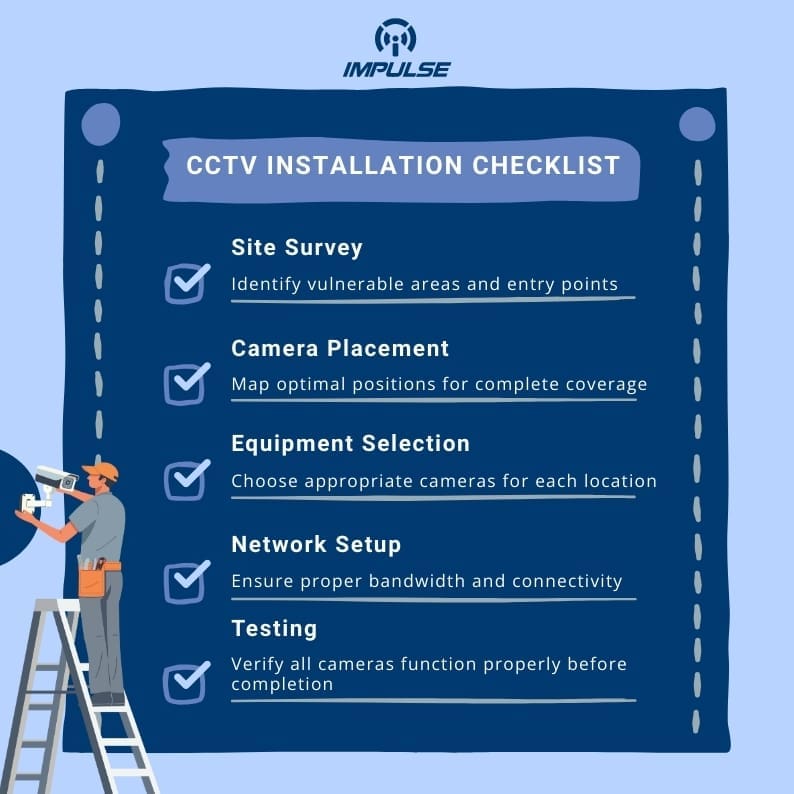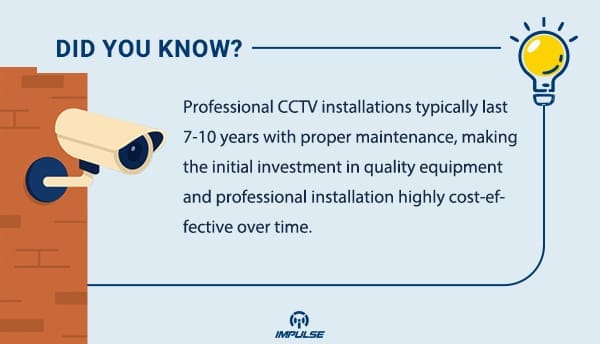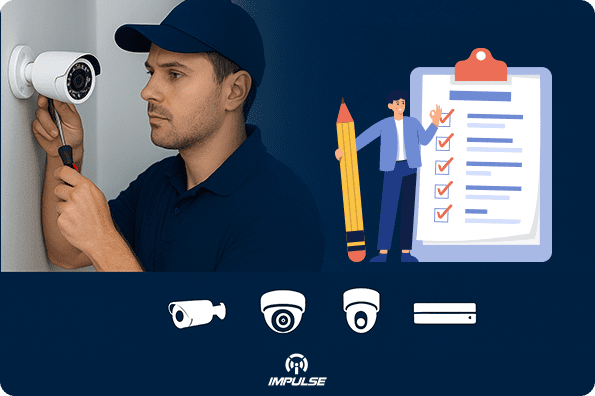In today’s security-conscious world, implementing a robust surveillance system isn’t just a luxury it’s a necessity. Whether you’re securing a residential property, commercial establishment, or industrial facility, a successful CCTV installation can be the difference between comprehensive protection and costly security gaps. This comprehensive CCTV installation guide will walk you through every critical step to ensure your surveillance system operates at peak performance.

Understanding the Foundation: Pre-Installation Assessment
Before diving into the physical installation process, a thorough assessment forms the cornerstone of any CCTV setup checklist. This preliminary phase determines the success of your entire security infrastructure.
Site Survey and Security Analysis
The first step in your CCTV installation steps involves conducting a comprehensive site survey. Identify all potential entry points, high-traffic areas, and vulnerable zones that require monitoring. Consider factors such as lighting conditions throughout different times of day, weather exposure, and potential obstacles that might obstruct camera views.
Document the property’s layout meticulously, noting existing electrical infrastructure, network connectivity options, and mounting surfaces. This information becomes invaluable when determining optimal camera placement and system requirements.
Camera Selection and Positioning Strategy
Modern surveillance solutions offer diverse camera types, each serving specific security needs. For outdoor perimeter monitoring, consider the 5MP Fixed lens Network Bullet Camera with its impressive 50-meter IR range and built-in microphone capabilities. This robust unit delivers exceptional performance in challenging outdoor environments while maintaining crystal-clear image quality.
For indoor applications requiring comprehensive coverage, the 5MP Motorized IR-Dome Camera provides excellent versatility with its progressive scan CMOS sensor and adjustable focal length, making it perfect for retail spaces, offices, and residential interiors.
The Technical Blueprint: System Design and Planning
Network Infrastructure Requirements
A successful CCTV installation demands robust network infrastructure capable of handling high-definition video streams. Calculate bandwidth requirements based on camera count, resolution settings, and recording quality. Ensure your network can accommodate peak data transmission without compromising system performance.
CCTV Installation Checklist:
- Site Survey: Identify vulnerable areas and entry points
- Camera Placement: Map optimal positions for complete coverage
- Equipment Selection: Choose appropriate cameras for each location
- Network Setup: Ensure proper bandwidth and connectivity
- Testing: Verify all cameras function properly before completion

Consider Power over Ethernet (PoE) solutions to simplify cable management while ensuring reliable power delivery to each camera. This approach reduces installation complexity and enhances system reliability.
Storage and Recording Considerations
Determine recording requirements based on regulatory compliance, insurance policies, and operational needs. Calculate storage capacity requirements considering factors like recording resolution, frame rates, compression settings, and retention periods.
Modern systems benefit from edge analytics capabilities, allowing cameras to process data locally before transmission. This approach reduces bandwidth usage while enabling intelligent features like motion detection and automated alerts.

Step-by-Step Installation Process
Phase 1: Preparation and Safety Protocols
Begin your step by step CCTV camera installation guide by establishing safety protocols. Ensure all personnel understand electrical safety procedures, ladder safety, and proper tool usage. Disconnect power to areas where electrical work will be performed.
Gather all necessary tools including drill bits, cable crimping tools, network testers, multimeters, and appropriate mounting hardware. Having everything ready prevents delays and ensures smooth installation flow.
Phase 2: Mounting and Positioning
Important things to check before CCTV installation include verifying mounting surface integrity, ensuring adequate support for camera weight, and confirming optimal viewing angles. Install cameras at heights that prevent tampering while maintaining effective coverage.
For specialized applications requiring extensive monitoring capabilities, the 5MP PTZ IP Network Camera offers unparalleled flexibility with 40X optical zoom and 200-meter IR range. Its auto-tracking capabilities and preset tour functions make it ideal for large facilities requiring dynamic surveillance coverage.
Phase 3: Cable Management and Connectivity
Professional cable management distinguishes amateur installations from professional implementations. Use appropriate cable types for each application—Cat6 for network connections, coaxial for analog systems, and dedicated power cables where PoE isn’t available.
Implement proper cable protection using conduits, cable trays, or weatherproof enclosures. Maintain separation between power and data cables to prevent interference, and leave service loops at connection points for future maintenance.
Phase 4: System Configuration and Testing
Configure each camera according to your CCTV installation requirements, adjusting settings for optimal performance in specific environmental conditions. Set up motion detection zones, recording schedules, and alert parameters based on operational needs.
Business-Specific Considerations
CCTV Installation Checklist for Businesses
Commercial installations require additional considerations including compliance with privacy regulations, integration with existing security systems, and scalability for future expansion. Implement access control measures ensuring only authorized personnel can modify system settings.
Consider implementing redundant recording systems for critical applications, utilizing both local and cloud storage solutions. This approach ensures data availability even during equipment failures or security incidents.
Security Camera Installation Tips for Optimal Performance
Optimize camera settings based on specific monitoring requirements. Adjust exposure settings for challenging lighting conditions, configure motion sensitivity to minimize false alarms, and establish recording quality standards balancing storage efficiency with evidential requirements.
Regular maintenance scheduling ensures long-term system reliability. Establish cleaning protocols, firmware update procedures, and performance monitoring routines to maintain peak system performance.
Advanced Integration and Smart Features
Modern CCTV system setup extends beyond basic recording functionality. Integrate analytics capabilities enabling automated threat detection, facial recognition, and behavioral analysis. These advanced features transform passive surveillance into proactive security management.
Consider integration with other security systems including access control, alarm systems, and lighting controls. This comprehensive approach creates a unified security ecosystem providing enhanced protection and operational efficiency.
How to Install CCTV Cameras with Future-Proofing?
Design installations with expansion capabilities, utilizing modular approaches allowing easy system scaling. Implement standardized mounting solutions and cable infrastructure supporting various camera types and technologies.
Stay current with emerging technologies, including artificial intelligence, cloud computing, and mobile integration. These advancements continuously enhance surveillance system capabilities and user experience.
Quality Assurance and System Validation
Comprehensive testing validates every aspect of your installation. Verify image quality under various lighting conditions, test motion detection accuracy, and confirm remote access functionality. Document all system settings and provide comprehensive user training.
Establish maintenance schedules addressing both preventive and corrective maintenance requirements. Regular system health checks identify potential issues before they impact security effectiveness.
Conclusion
A successful CCTV installation requires meticulous planning, professional execution, and ongoing maintenance commitment. By following this comprehensive checklist, you ensure your surveillance system provides reliable, long-term security protection meeting your specific requirements.
The investment in professional installation pays dividends through enhanced security effectiveness, reduced maintenance costs, and extended equipment lifespan. Quality equipment from trusted manufacturers, combined with expert installation practices, creates surveillance systems that protect what matters most.
Remember that technology continues evolving, and periodic system reviews ensure your security infrastructure remains current with emerging threats and technological advances. Partner with experienced professionals who understand both current requirements and future security trends.
Work with us on your next project. Our certified technicians bring security expertise and cutting-edge technology to ensure your surveillance system performs flawlessly.


